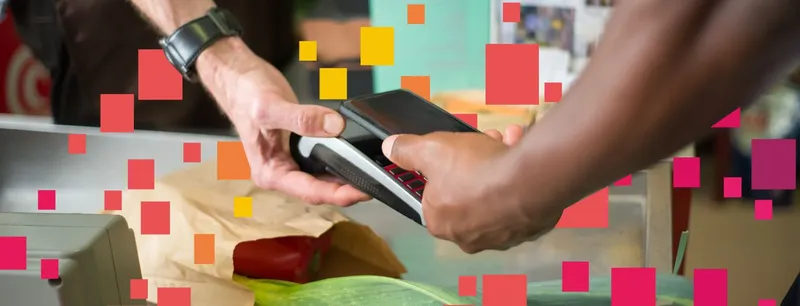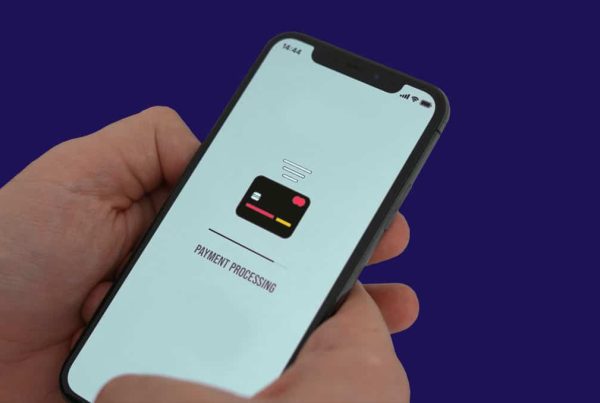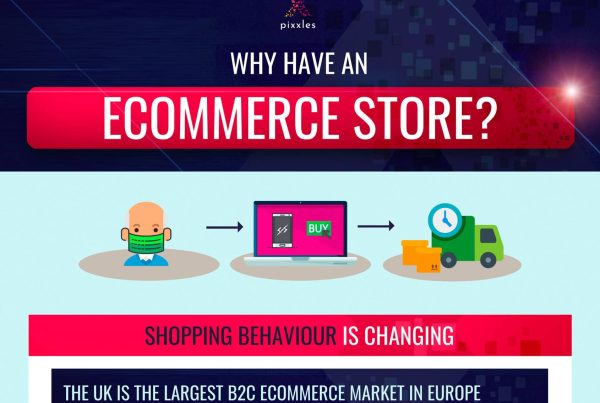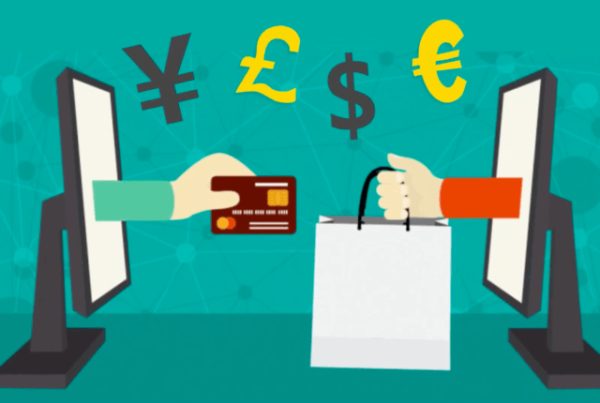NFC payments are becoming increasingly popular in today’s technology economy.
If you’re thinking of jumping on board and taking NFC mobile payments, here are 9 facts you should remember.
1. Almost All Smartphones Today Come With NFC Technology
Today, almost all smartphones and even smartwatches come with NFC technology, making NFC mobile payments commonplace.
According to Statista, 28 percent of smartphone users in the UK will be using their smartphones to make contactless payments by 2025. We expect this trend to continue until the end of the decade and beyond.
Why NFC Mobile Payments Are Gaining Popularity
The reason NFC technology is so widespread is the efficiency of contactless payments.
The acronym NFC means “near-field communication,” which implies that you don’t need to run a magnetic stripe through a card reader or insert a chip card to make a payment.
This makes payments faster for customers who are able to put their smartphone (or contactless card) near an NFC reader for a second or two, make their payment, get their receipt, and move on.
NFC Devices Are Fast Because They Don’t Need To Be Paired
NFC mobile payments allow for such efficiency in part because they don’t require you to go through the same sort of steps you do when using Wi-Fi or Bluetooth technologies.
NFC devices don’t require you to pair them, which makes payments faster than they would be otherwise.
2. Accepting NFC Mobile Payments Is Easier Than You’ve Heard
Although using NFC technology might sound complicated (you might be asking yourself, how will I set up payments?) the truth is that accepting NFC payments is fairly easy.
To start taking NFC mobile payments, you have to get an NFC-enabled device. There are a number of NFC card readers and terminals on the market that you can choose from.
You may be able to use your smartphone if you’re running a small business and have a low charge limit or if you use an app with a certified setup that allows you to take secure payments.
Once you’ve decided what approach you want to take, you then need to choose a payment provider that accepts NFC payments and go through onboarding with them.
3. Multiple Business Types Use NFC Mobile Payments
With the advent of computer and wireless technology, the adoption of NFC mobile payment methods by merchants has steadily broadened.
At present, NFC mobile payments are most commonly used by the following businesses:
Mobile Business
Mobile businesses that benefit from taking payments through a smartphone or portable NFC reader will likely do so.
These businesses include anything from a newer ecommerce brand that is transitioning into in-person sales to an artist selling their wares at an art show to a house cleaner who has to deal with multiple clients in various locations throughout the day.
Essentially, any business that is on the go and needs a flexible way to make payments will probably accept NFC mobile payments.
Brick-and-Mortar Stores
Brick-and-mortar stores also frequently take NFC mobile payments for various reasons.
One such reason is that you don’t need to rely solely on a checkout counter, which is helpful during busy hours.
Doctor’s Offices and Dentists
Doctors’ offices and dentists sometimes use NFC mobile payments to streamline their payment processes.
Restaurants and Food Trucks
Restaurants and food trucks commonly use NFC mobile payments, which are helpful for servers and convenient for diners.
Rather than waiting for your server to return with your receipt from their point of sale system, you can pay quickly at your table and get your receipt emailed if your server has a handheld NFC device.
Catering or Food Pick-up Business
Taking NFC mobile payments is a helpful strategy if you run a catering or restaurant pick-up business.
Some of your customers may not want to come inside your store to pay for their food for a variety of reasons, so it’s good to have an alternative available.
Giving customers the option to pay from their vehicle is likely to incentivize some of them to choose you over competitors who don’t provide the same option.
4. NFC Mobile Payments May Be More Secure Than Magnetic Strip Cards
NFC mobile payments are more secure than paying with a traditional credit or debit card since NFC payment data (i.e., your card information) is rarely exposed.
The only opportunity an average thief has to take this information is when someone initially enters it into their mobile wallet.
After this point, the person’s number gets encrypted, making it exceptionally difficult for thieves to use.
NFC Mobile Wallet Security
If you plan on using an NFC mobile wallet yourself, it’s possible that a common thief may try taking your phone.
Fortunately, it isn’t difficult to secure your phone with a strong passcode and secondary security features.
Once you’ve set up these features, a thief would first have to bypass your phone’s security and then decrypt your card number in order to use your information.
This is a more difficult undertaking than simply stealing your magnetic stripe card when you’re not looking.
Note About NFC Payment Vulnerabilities
Please keep in mind that NFC mobile payments, just like any other form of payment, do have vulnerabilities.
High-level hackers are always looking for new exploits that are tricky, complex, and difficult to detect.
To ensure you and your business are safe, it’s smart to work with a payment provider who actively monitors your data security.
5. NFC Mobile Payments Are Generally Affordable
The fee for accepting an NFC mobile payment in a store or in person is similar to what you’d pay when accepting a swipe or chip card.
The reason for the similarity is that in-person NFC mobile payments are considered to be card-present (CP) transactions, which makes them more secure than card-not-present (CNP) transactions.
This is good news for business owners who may be concerned about high transaction fees.
CP Transactions vs CNP Transactions
CP transactions are different from card-not-present (CNP) transactions in a couple of key ways.
One, CP transactions are more cost-friendly since they are more secure and are less likely to fall prey to fraud.
Two, CNP transactions come with a higher risk of chargebacks.
(Chargebacks occur when a customer disputes a transaction and asks you to reverse it.)
In-Person NFC Mobile Payments Are CP Transactions
We want to reiterate that any time a customer makes an NFC mobile payment in person, this is considered to be a card-present transaction.
Although no card is technically used, the person’s smartphone contains their payment information and thus performs the same function as their card.
Ecommerce purchases, by contrast, are an example of CNP transactions. Phone orders and recurring payments fall within this category as well.
CNP Transactions and Fraud
There is an enormous amount of CNP transaction fraud every year in the UK—an issue that continues to expand with the increasing popularity of ecommerce.
CNP transactions have less secure channels, and remote purchases offer increased anonymity and plenty of opportunities for fraudsters to get a hold of card information.
NFC Reader Cost
Those who are intrigued by the possibility of taking NFC mobile payments will be happy to know that NFC readers and terminals are very affordable.
You can get an NFC reader for only around £50, and for less than £200, you can get a terminal that takes NFC payments and magnetic stripe and chip cards.
Additionally, the minimum monthly service charge from your merchant services provider for operating a contactless payment machine typically doesn’t go higher than £30.
Sole traders may be able to skip getting an NFC reader and terminal altogether by downloading a mobile app to their smartphone that supports NFC payments.
Figuring Out If Your Phone Is NFC Enabled
If you can download and use the Apple Wallet app (iPhone) or the Google Pay app (Android), then your phone is NFC enabled.
Just follow this simple rule to find out.
6. Customers Spend More When Making NFC Mobile Payments
Did you know that customers tend to spend more when using contactless payment methods compared to traditional cards and cash?
Curiously enough, contactless payments are perceived to be less painful by customers, which is the reason for this phenomenon.
7. NFC Mobile Payments Help You Track Your Business Data
Keeping in mind the psychological component of contactless purchases, you can boost customer loyalty by analyzing the data you receive from NFC mobile payments and using this information to create special offers, coupons, and other incentives.
Points programs, tiered programs, spend-based programs, and partnered programs can all be enhanced with your NFC mobile payment transaction data.
By extension, if you are collecting valuable data from your NFC transactions, you are going to improve your overall marketing strategy.
Specific Data Points From NFC Mobile Payments
Some specific data points you can collect from NFC mobile payments include:
What items your customers are most interested in, where purchases are being made, which of your sales come from repeat customers, and which of your price points are optimal.
8. NFC Mobile Payment Technologies Use A Type of RFID
While there are differences between RFID and NFC devices, NFC is technically a High-Frequency (HF) variety of RFID that has been smartly honed for a very specific purpose—exchanging valuable information at a very short range.
With that said, here are the main differences between RFID and NFC:
RFID
RFID tags aren’t able to transmit a lot of data, and they only transmit one way, meaning they transmit to the RFID reader. The transmission range for RFID tags runs from 25 to 100 meters, depending on whether they are active or passive.
NFC
NFC devices are able to send more complex data in addition to transmitting information two ways between devices. In other words, NFC devices can act as both a reader and a tag. The range of transmission for NFC devices is very small—under 4 inches (10 centimeters).
This limited range is an advantage for NFC devices, which as you know, are used to exchange sensitive payment data.
If NFC ranges were as long as RFID, customers and merchants would encounter increased security risks.
How NFC Devices Communicate With Device Tags
Another central difference between NFC and RFID technology is that NFC readers are designed to communicate with one device tag at a time.
They are built this way so that customers who have nearby devices won’t accidentally pay for someone else’s purchase.
Bear in mind that NFC devices can ‘detect’ more than one tag at any given time, but this isn’t the same as communicating sensitive payment data to them.
How RFID Devices Communicate With Device Tags
RFID scanners also technically only communicate with one tag at a time, but their function is to read a large number of tags at once.
The way they handle this seeming paradox is by employing an anti-collision protocol that allows the RFID reader to select a specific tag, acquire the information it needs from the tag, then move on to the next tag in a group in rapid succession.
Although the RFID reader is only reading one device at a time, the reader is moving so fast that it seems to the human eye to be reading RFID tags more or less simultaneously.
9. Contactless Payments are Fast and Convenient
Contactless cards are another issue we want to address.
Accepting contactless card payments is a logical move for nearly any business today because of how many people use contactless cards.
Please note that there is a difference between accepting NFC mobile payments and payments made with contactless cards.
Although the two aren’t the same thing, contactless cards need to be mentioned.
There Are 130+ Million Contactless Cards In The UK Alone
According to UK Finance, 83 percent of people in the UK used contactless payments in 2020. There were also 135 million contactless cards in circulation that year.
Three years on, and we suspect this number has increased for a few different reasons, one of which is that contactless payments don’t require you to touch anything—a central concern during the lockdown.
Contactless payments are usually easier to make than swiping or inserting your card, and many customers gravitate to the speed and convenience they offer.





